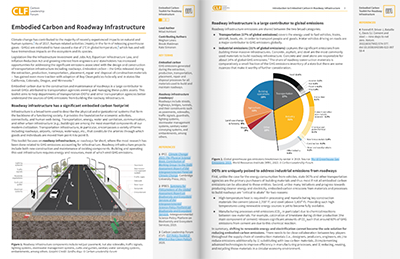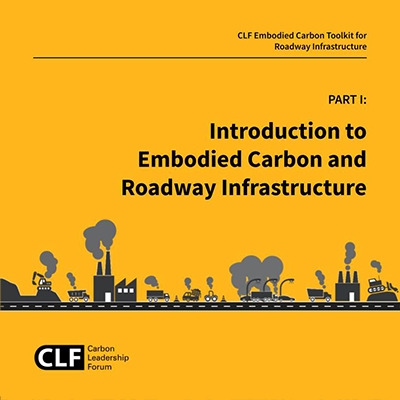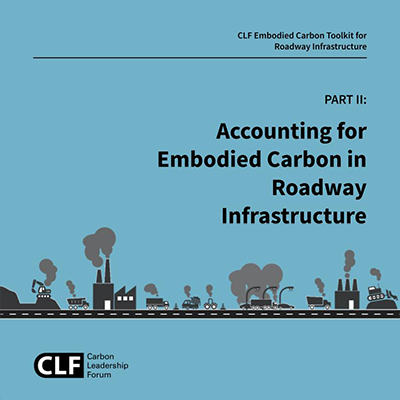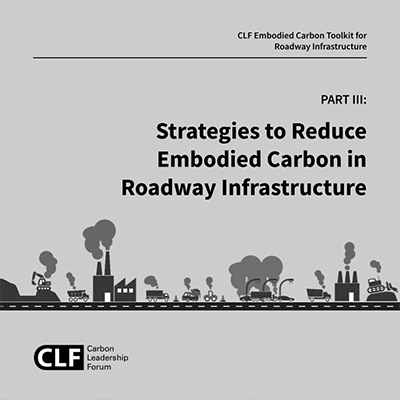The CLF Embodied Carbon Toolkit for Roadway Infrastructure in three parts provides an overview of the sources of greenhouse gas emissions from building roadways, explains its accounting methodology, and summarizes key strategies to reduce those emissions.
Di
The CLF Embodied Carbon Toolkit for Roadway Infrastructure is one of several CLF’s Toolkit series that serve as abstract references for practitioners, researchers, and policymakers that are collectively targeted at understanding, estimating, and reducing embodied carbon within the context of buildings and infrastructure. This Toolkit, with a focus on the embodied carbon from building the roadway infrastructure, presents an overview of embodied carbon concepts and accounting mechanisms and provides a summary of critical steps to be taken for reducing climate change impacts of roadways. The Toolkit, in three parts, is intended to guide transportation agencies and other related stakeholders into a decarbonized future by:
- Introducing embodied carbon and its major sources within the context of roadway infrastructure construction.
- Highlighting the significant role of the transportation infrastructure in contributing to climate change impacts.
- Providing a summary of standard methodologies in accounting for embodied carbon through life cycle assessment (LCA).
- Summarizing available tools to conduct LCA for roadway infrastructure as a whole and its constituent components.
- Proposing the most impactful current and future strategies in reducing embodied carbon from the roadway infrastructure.
Milad Ashtiani, Meghan Lewis, Brook Waldman, and Kate Simonen
Pubblicato: February 2024
Diritto d'autore
Creative Commons Attribution
4.0 International License.
© Carbon Leadership Forum 2024




